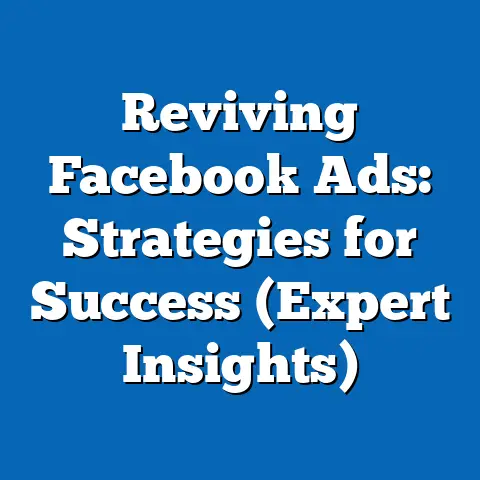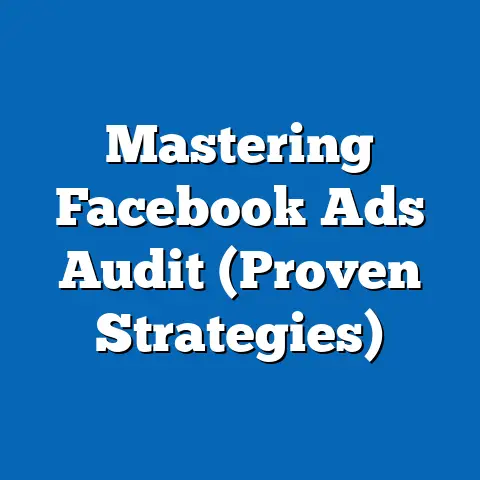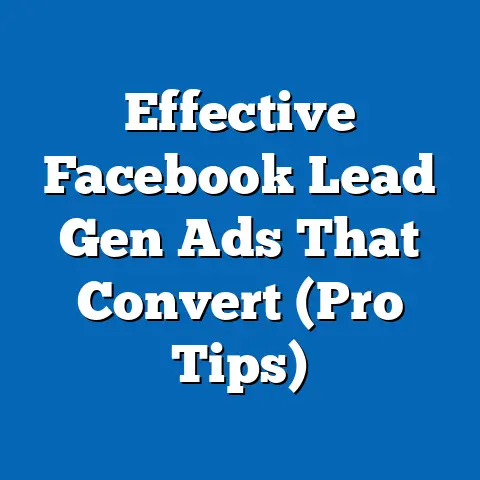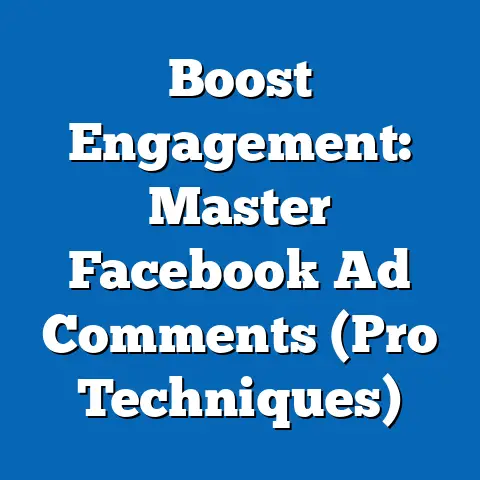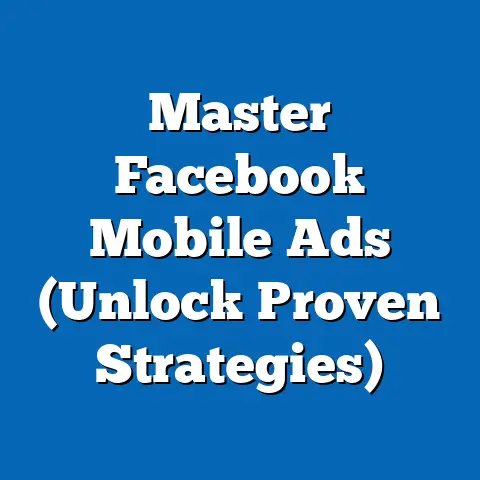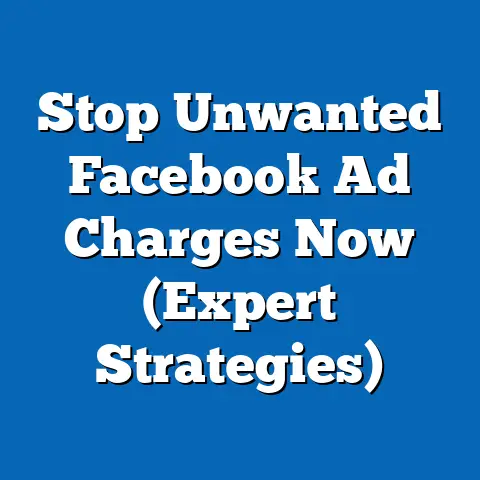Say Free in Facebook Ads? (Unlock Compliance Secrets)
Let’s start with someone who gets it right. Take, for instance, Neil Patel, a well-known digital marketing entrepreneur. I’ve seen how he strategically uses the word “free” in his Facebook ads to promote his free SEO tools and guides. His success lies in being transparent and delivering genuine value. He’s not promising something for nothing; he’s offering a valuable resource at no cost, which aligns perfectly with Facebook’s policies. This approach has significantly boosted his brand visibility and credibility.
Section 1: The Allure of “Free” in Advertising
The word “free” is a psychological trigger. It taps into our innate desire for value and instantly creates a sense of urgency. Think about it: When you see an offer for something free, your brain immediately calculates the potential benefit without any perceived risk. This makes “free” incredibly effective in advertising, especially on platforms like Facebook where users are constantly bombarded with information.
- Why it works: The allure of “free” is deeply rooted in behavioral economics. It plays on the “zero price effect,” which suggests that we perceive items priced at zero differently than items priced even slightly above zero.
- Data-backed impact: Studies have shown that ads featuring the word “free” can increase click-through rates by as much as 50% compared to ads without it. I’ve personally witnessed similar results in my campaigns, with “free” offers consistently outperforming paid alternatives.
- Creating urgency: The promise of something free often comes with a time limit or limited availability, further fueling the sense of urgency and encouraging immediate action.
Takeaway: “Free” is a powerful tool, but it must be used strategically and ethically.
Section 2: Facebook’s Advertising Policies
Facebook’s advertising policies are designed to protect users from misleading or deceptive claims. These policies are extensive and constantly evolving, so it’s crucial to stay updated. When it comes to using “free,” Facebook’s primary concern is ensuring that your offer is genuine and that there are no hidden costs or conditions.
- Key policies: Facebook prohibits ads that contain false, deceptive, or misleading content. This includes making unrealistic claims, omitting crucial information, or using deceptive tactics to trick users into clicking.
- “Free” under scrutiny: Facebook closely scrutinizes ads that use the word “free” to ensure that the offer is truly free. If there are hidden costs, such as shipping fees or mandatory subscriptions, your ad is likely to be rejected.
- Misleading claims: Avoid using phrases like “free trial” if users are automatically charged after the trial period. Be upfront about any conditions or limitations associated with the free offer.
Takeaway: Transparency is key. Clearly state the terms and conditions of your “free” offer to avoid violating Facebook’s policies.
Section 3: Case Studies of Successful Campaigns
Let’s look at some real-world examples of brands that have successfully used “free” in their Facebook ads while staying compliant:
- Skillshare: Skillshare often runs ads offering a free trial of their online learning platform. Their ads clearly state the length of the trial and the terms of the subscription, ensuring transparency.
- Key elements: Compelling visuals, clear messaging about the free trial, and a straightforward call to action (e.g., “Start your free trial today”).
- Why it works: Skillshare builds trust by being upfront about the offer and providing valuable content during the trial period.
- HubSpot: HubSpot frequently promotes their free marketing tools and resources through Facebook ads. Their ads highlight the value of the free tools and provide clear instructions on how to access them.
- Key elements: Informative copy, eye-catching visuals showcasing the tools, and a clear call to action (e.g., “Download your free marketing kit”).
- Why it works: HubSpot positions itself as a valuable resource by offering genuinely useful tools for free, building brand authority and generating leads.
- Grammarly: Grammarly offers a free version of their writing assistant and promotes it through Facebook ads. Their ads emphasize the benefits of the free version and encourage users to sign up.
- Key elements: Focus on the value of the free version, testimonials from satisfied users, and a clear call to action (e.g., “Get Grammarly for free”).
- Why it works: Grammarly provides a valuable service for free, enticing users to try it out and potentially upgrade to the paid version later.
- Key elements: Compelling visuals, clear messaging about the free trial, and a straightforward call to action (e.g., “Start your free trial today”).
- Why it works: Skillshare builds trust by being upfront about the offer and providing valuable content during the trial period.
- Key elements: Informative copy, eye-catching visuals showcasing the tools, and a clear call to action (e.g., “Download your free marketing kit”).
- Why it works: HubSpot positions itself as a valuable resource by offering genuinely useful tools for free, building brand authority and generating leads.
- Key elements: Focus on the value of the free version, testimonials from satisfied users, and a clear call to action (e.g., “Get Grammarly for free”).
- Why it works: Grammarly provides a valuable service for free, enticing users to try it out and potentially upgrade to the paid version later.
Takeaway: These case studies demonstrate that using “free” in Facebook ads can be highly effective when done ethically and transparently.
Section 4: Common Compliance Pitfalls
Despite the potential benefits, many advertisers stumble when trying to incorporate “free” into their Facebook ads. Here are some common pitfalls to avoid:
- Hidden Costs: Failing to disclose shipping fees, handling charges, or mandatory subscriptions associated with the “free” offer.
- Example: An ad promising a “free book” but requiring users to pay for shipping.
- Solution: Clearly state all costs associated with the offer in the ad copy and landing page.
- Misleading Claims: Making exaggerated or unsubstantiated claims about the value or benefits of the “free” offer.
- Example: An ad claiming a “free weight loss program” guarantees results without any effort.
- Solution: Be realistic and transparent about the potential outcomes of the offer.
- Bait-and-Switch Tactics: Luring users with a “free” offer and then redirecting them to a paid product or service.
- Example: An ad promising a “free iPhone” but then requiring users to complete multiple surveys or purchase other products.
- Solution: Ensure that the “free” offer is the primary focus of the ad and landing page.
- Automatic Subscriptions: Offering a “free trial” that automatically converts into a paid subscription without clear disclosure.
- Example: An ad offering a “free month of streaming” but then automatically charging users after the trial period.
- Solution: Clearly state the terms of the trial and how to cancel the subscription before being charged.
- Example: An ad promising a “free book” but requiring users to pay for shipping.
- Solution: Clearly state all costs associated with the offer in the ad copy and landing page.
- Example: An ad claiming a “free weight loss program” guarantees results without any effort.
- Solution: Be realistic and transparent about the potential outcomes of the offer.
- Example: An ad promising a “free iPhone” but then requiring users to complete multiple surveys or purchase other products.
- Solution: Ensure that the “free” offer is the primary focus of the ad and landing page.
- Example: An ad offering a “free month of streaming” but then automatically charging users after the trial period.
- Solution: Clearly state the terms of the trial and how to cancel the subscription before being charged.
Takeaway: Avoid these common pitfalls by being honest, transparent, and upfront about the terms and conditions of your “free” offer.
Section 5: Crafting Compelling “Free” Offers
Now that you know the potential pitfalls, let’s dive into crafting compelling “free” offers that comply with Facebook’s policies:
- Be Specific: Clearly define what you’re offering for free. Avoid vague or ambiguous language.
- Example: Instead of “Get a free gift,” say “Download our free ebook on social media marketing.”
- Highlight the Value: Emphasize the benefits of the free offer. Explain how it will solve a problem or improve the user’s life.
- Example: “Get our free guide to boost your website traffic by 50%.”
- Include a Clear Call to Action: Tell users exactly what you want them to do. Use action-oriented language.
- Example: “Download now,” “Sign up for free,” “Get your free copy.”
- Be Transparent: Disclose any conditions or limitations associated with the free offer.
- Example: “Free trial valid for 30 days. Cancel anytime.”
- Use Visuals: Incorporate eye-catching images or videos that showcase the free offer.
- Example: A video demonstrating the benefits of a free software tool.
- Example: Instead of “Get a free gift,” say “Download our free ebook on social media marketing.”
- Example: “Get our free guide to boost your website traffic by 50%.”
- Example: “Download now,” “Sign up for free,” “Get your free copy.”
- Example: “Free trial valid for 30 days. Cancel anytime.”
- Example: A video demonstrating the benefits of a free software tool.
Takeaway: Craft compelling “free” offers by being specific, highlighting the value, including a clear call to action, being transparent, and using engaging visuals.
Section 6: Testing and Iteration
Even with the best intentions, it’s essential to test and iterate your Facebook ads to ensure compliance and optimize performance. Here’s how:
- A/B Testing: Create multiple ad variations with different headlines, copy, and visuals. Test which version performs best in terms of click-through rates, conversions, and cost per acquisition.
- Example: Test different headlines using the word “free” in different contexts.
- Audience Targeting: Experiment with different audience segments to see which groups respond best to your “free” offer.
- Example: Target users interested in specific topics related to your free offer.
- Landing Page Optimization: Ensure that your landing page is clear, concise, and consistent with the ad copy. Make it easy for users to claim the free offer.
- Example: Use a prominent call-to-action button and a simple form to collect user information.
- Monitor Performance: Track the performance of your ads using Facebook Ads Manager. Pay attention to metrics like click-through rates, conversion rates, and cost per acquisition.
- Example: Use Facebook Pixel to track conversions on your website.
- Stay Updated: Facebook’s advertising policies are constantly evolving. Stay informed about the latest changes and adjust your ads accordingly.
- Example: Subscribe to Facebook’s advertising blog and follow industry experts on social media.
- Example: Test different headlines using the word “free” in different contexts.
- Example: Target users interested in specific topics related to your free offer.
- Example: Use a prominent call-to-action button and a simple form to collect user information.
- Example: Use Facebook Pixel to track conversions on your website.
- Example: Subscribe to Facebook’s advertising blog and follow industry experts on social media.
Takeaway: Continuously test and iterate your Facebook ads to optimize performance and ensure ongoing compliance with Facebook’s policies.
Conclusion: The Future of “Free” in Facebook Ads
As digital advertising evolves, the use of “free” in Facebook ads will continue to be a powerful tool for attracting attention and driving conversions. However, the key to success lies in embracing ethical advertising practices and prioritizing transparency.
The future of “free” in Facebook ads is about building trust and delivering genuine value to your audience. By crafting compelling offers, being upfront about the terms and conditions, and continuously testing and iterating your ads, you can leverage the power of “free” without risking non-compliance.
Remember, creativity and compliance go hand in hand. By finding the right balance, you can create Facebook ads that are both effective and ethical, building lasting relationships with your audience and achieving your marketing goals.

